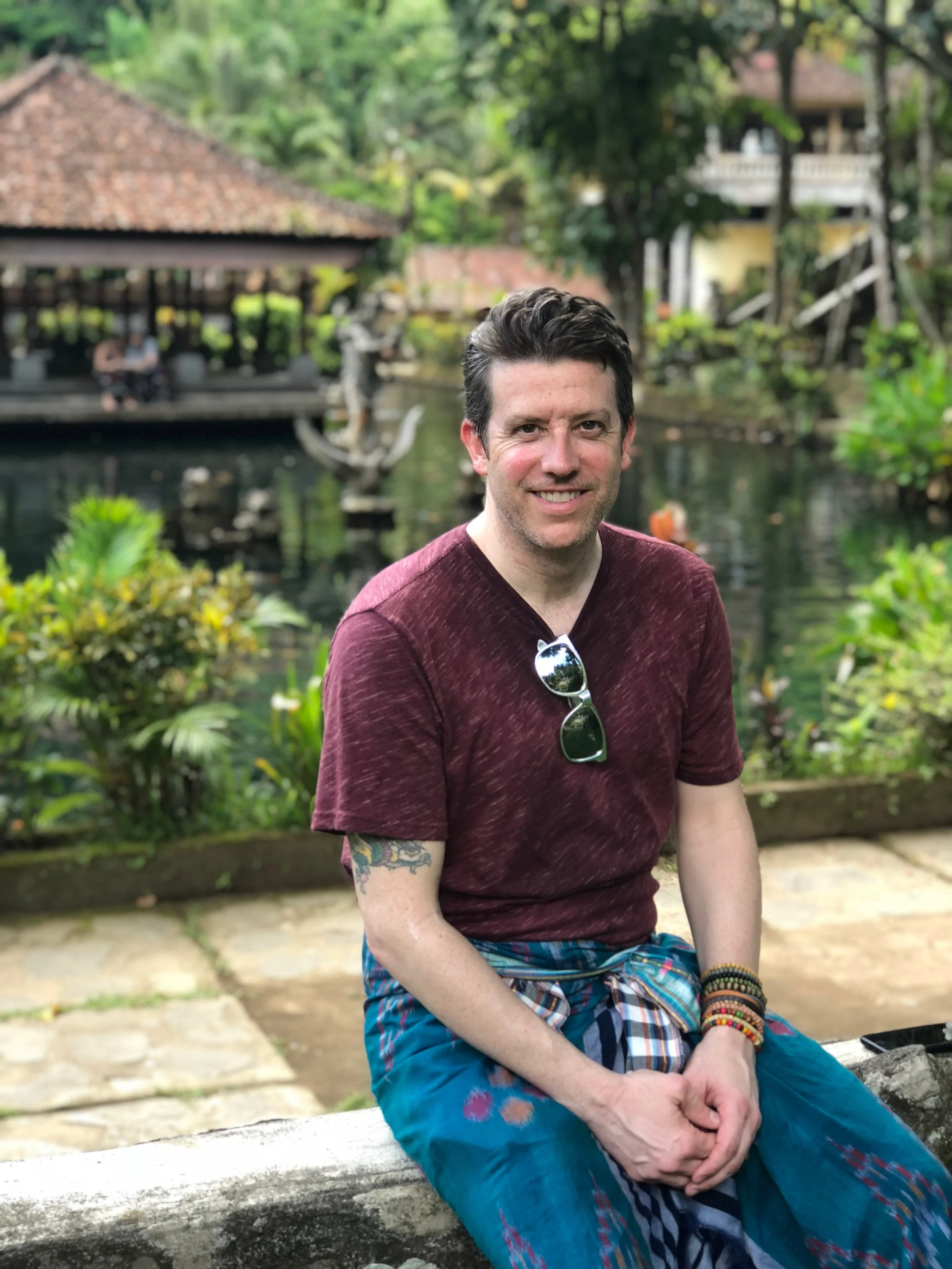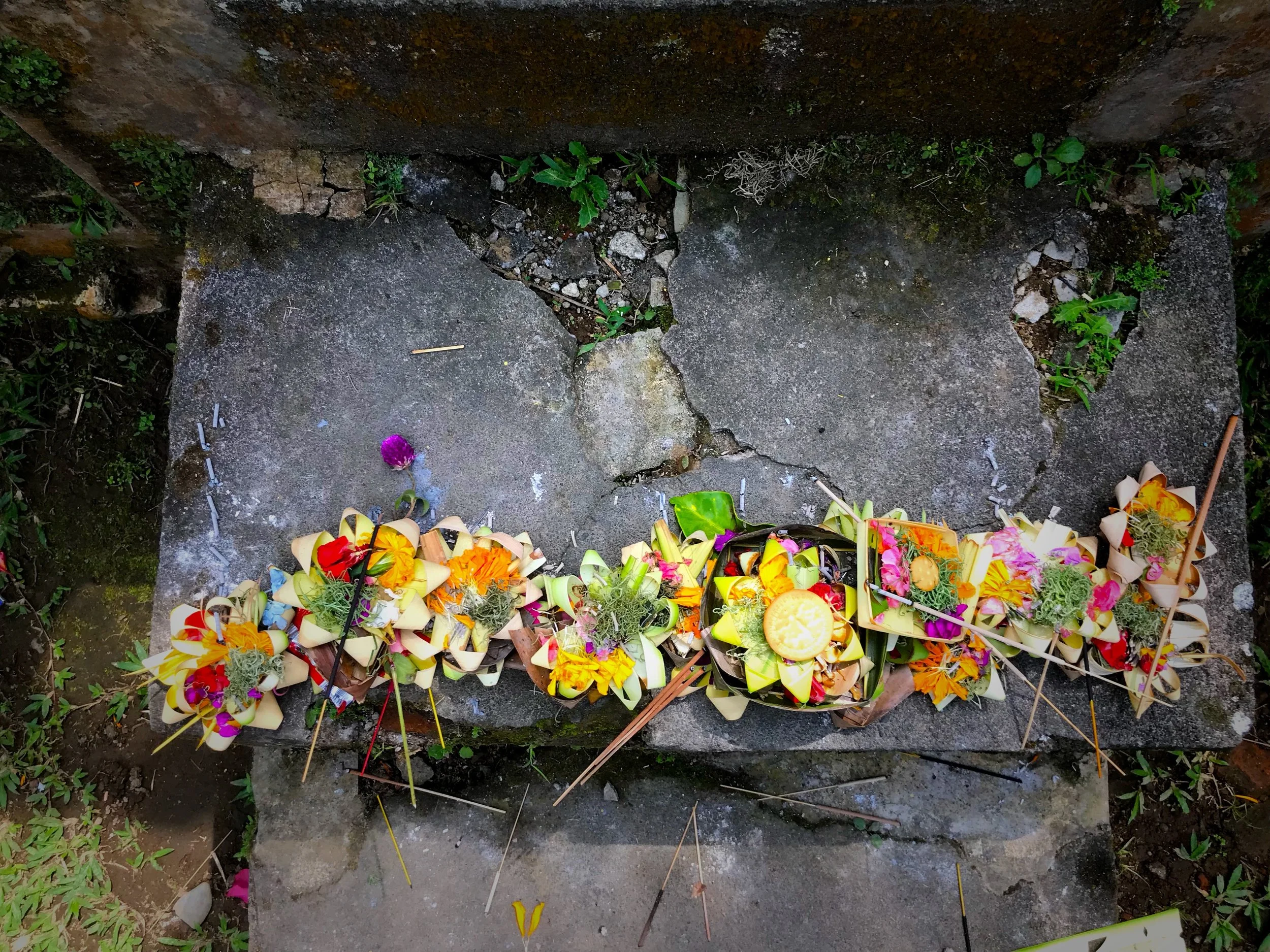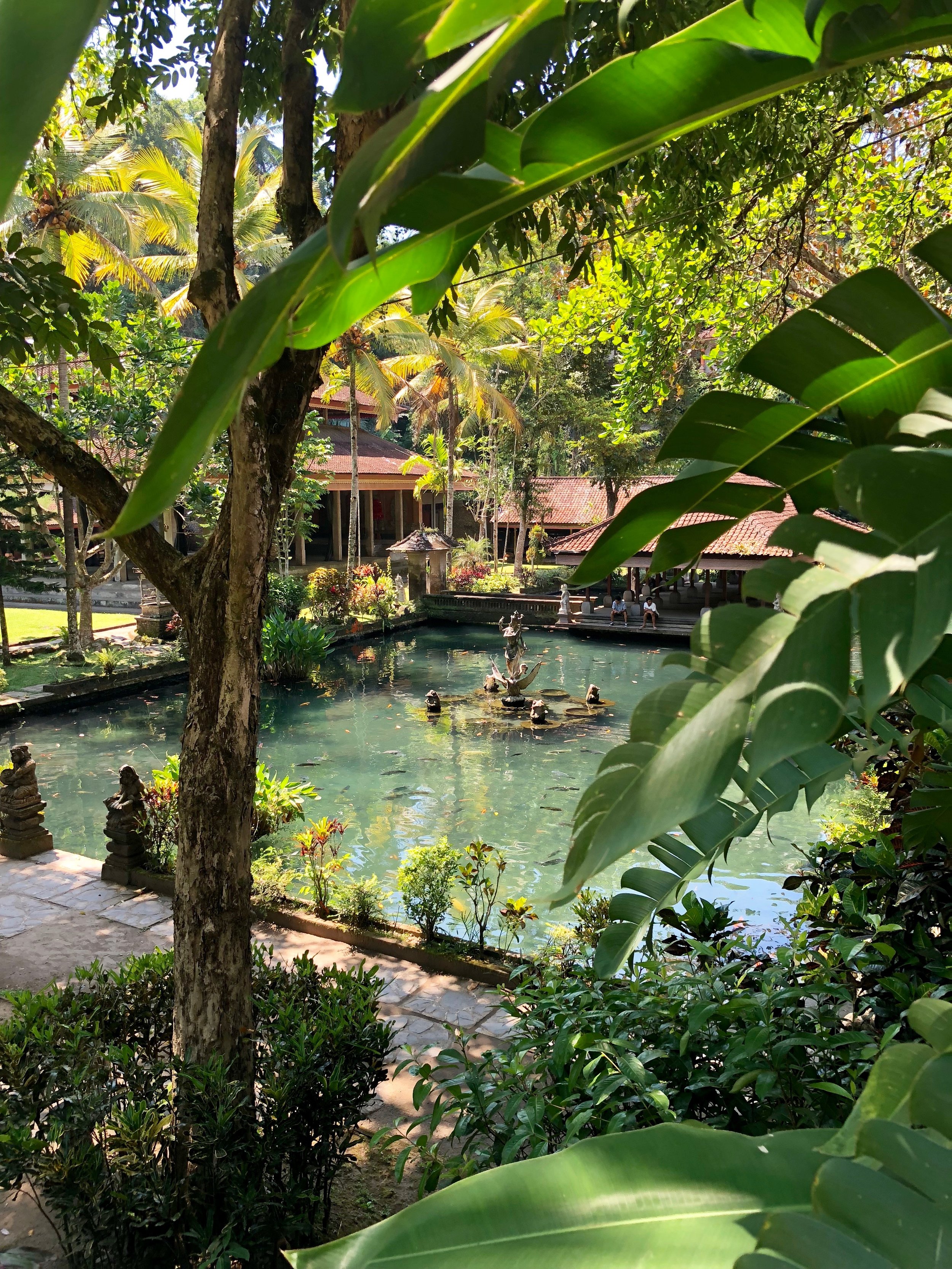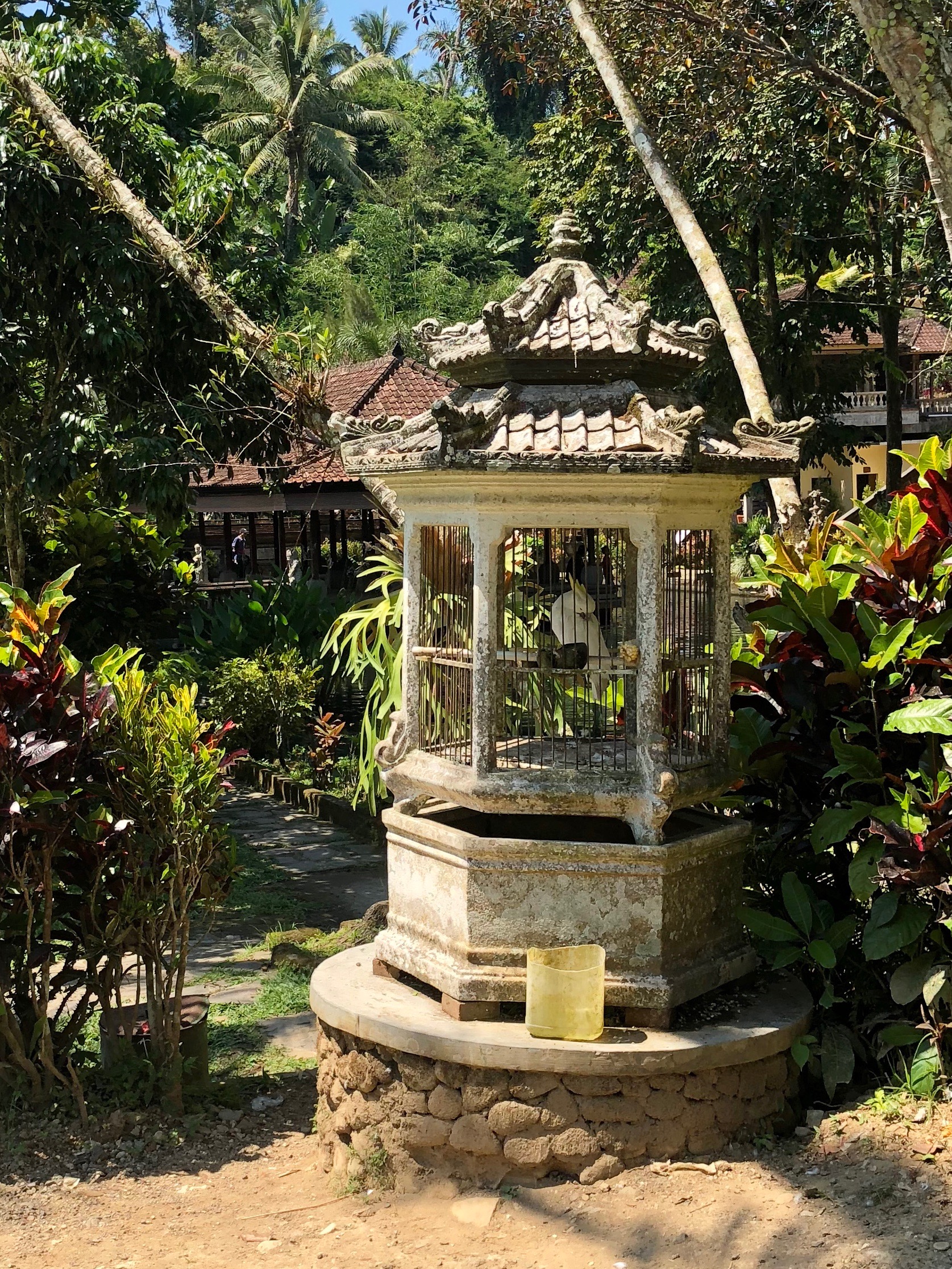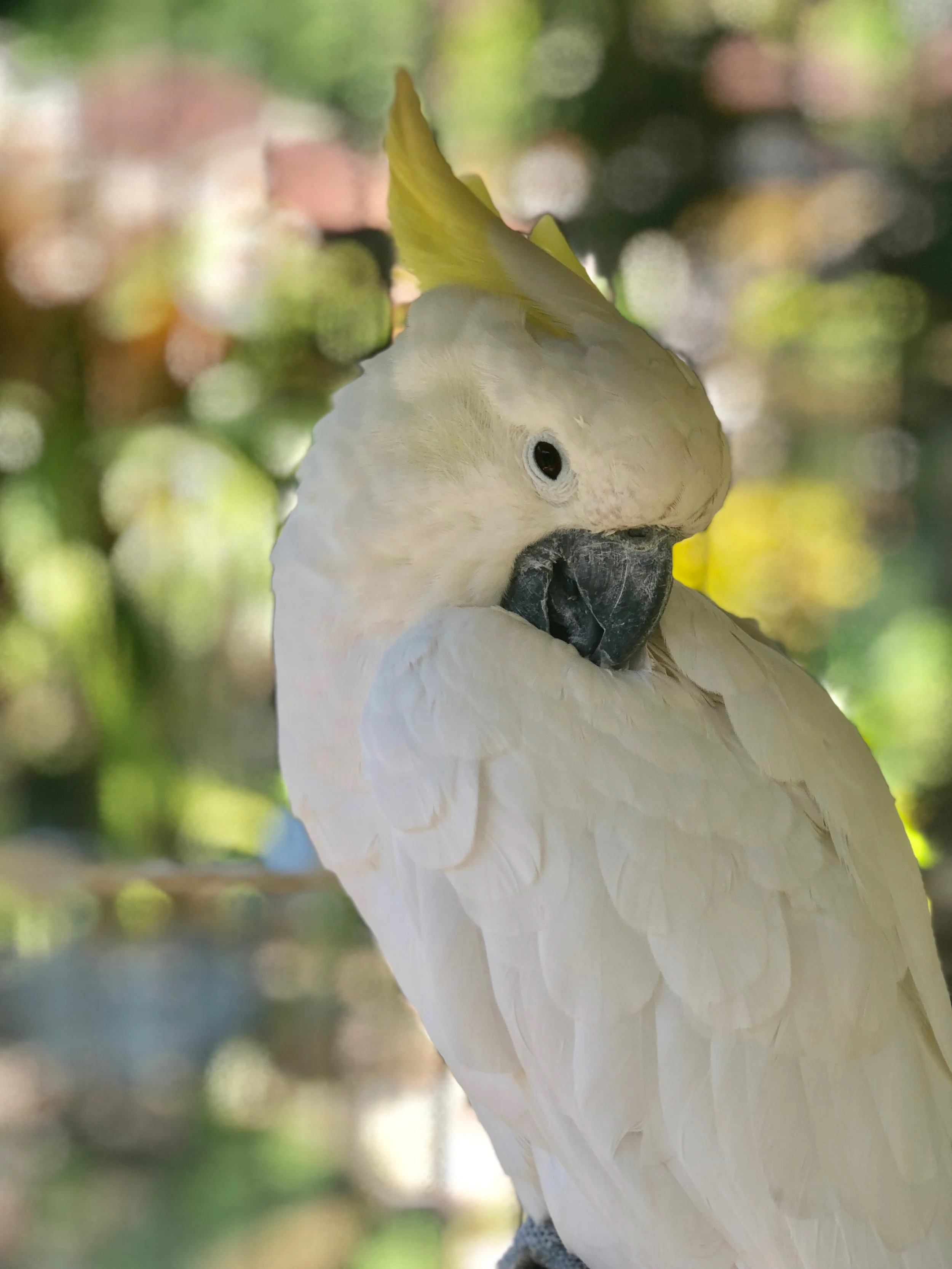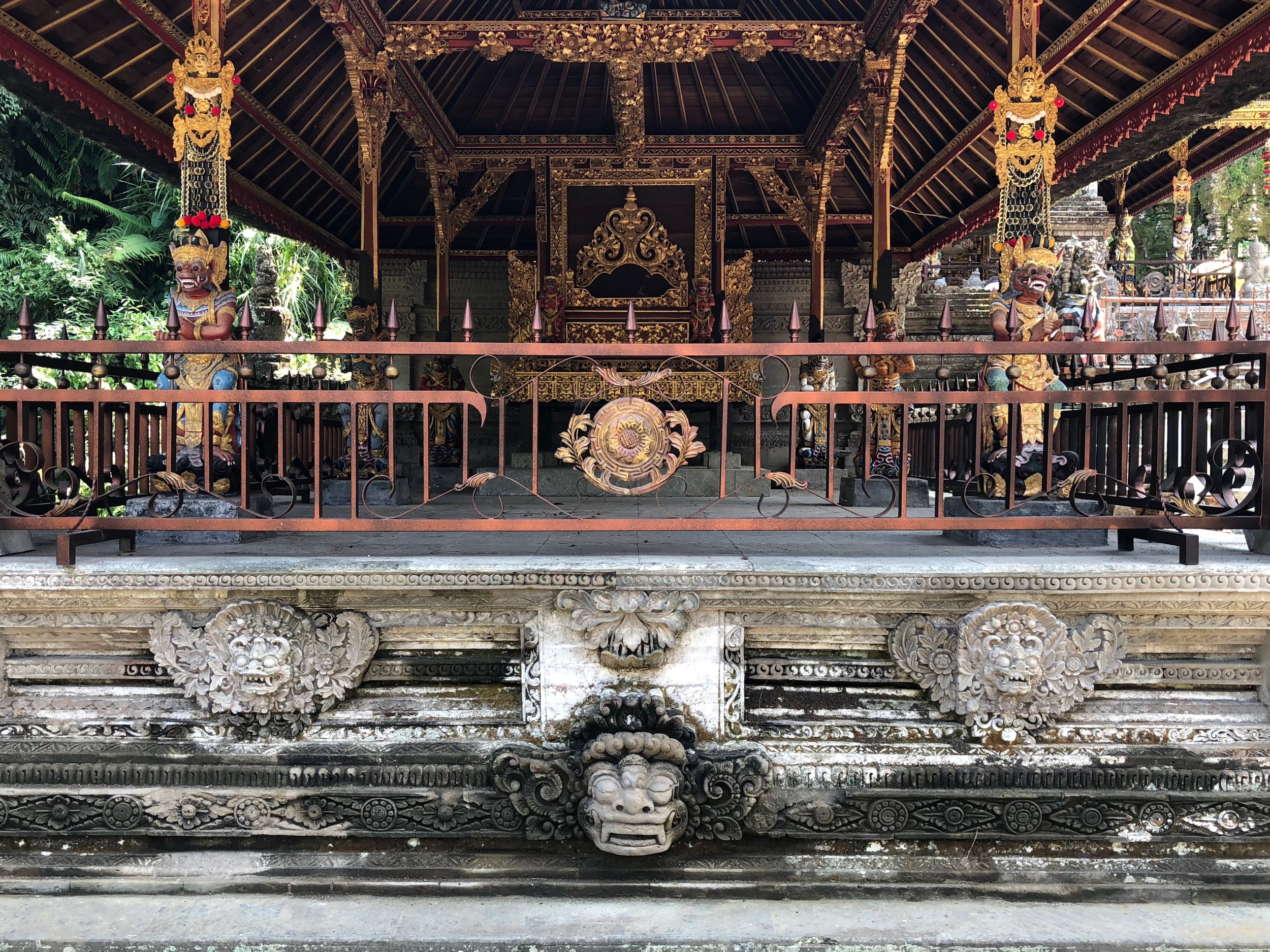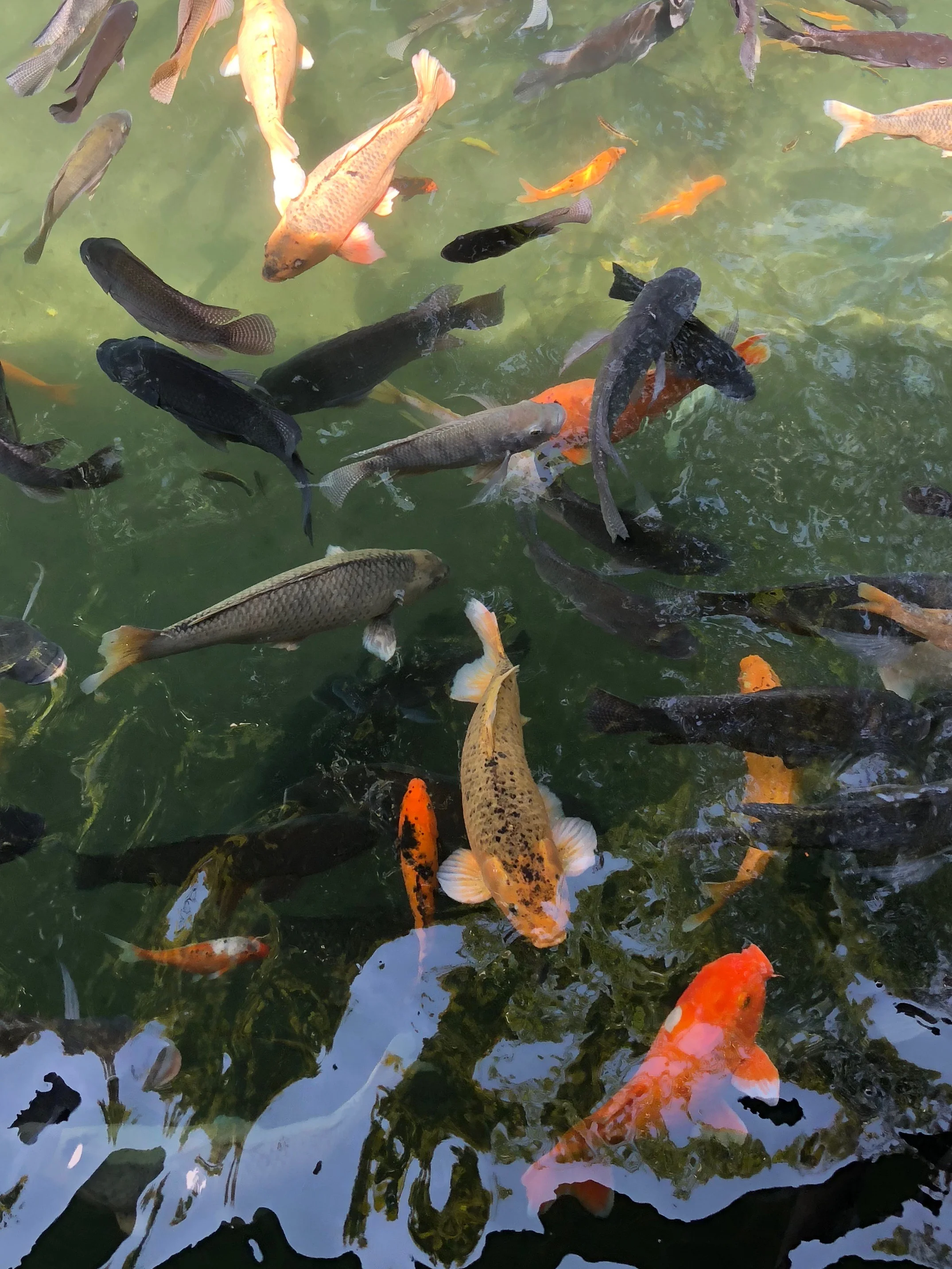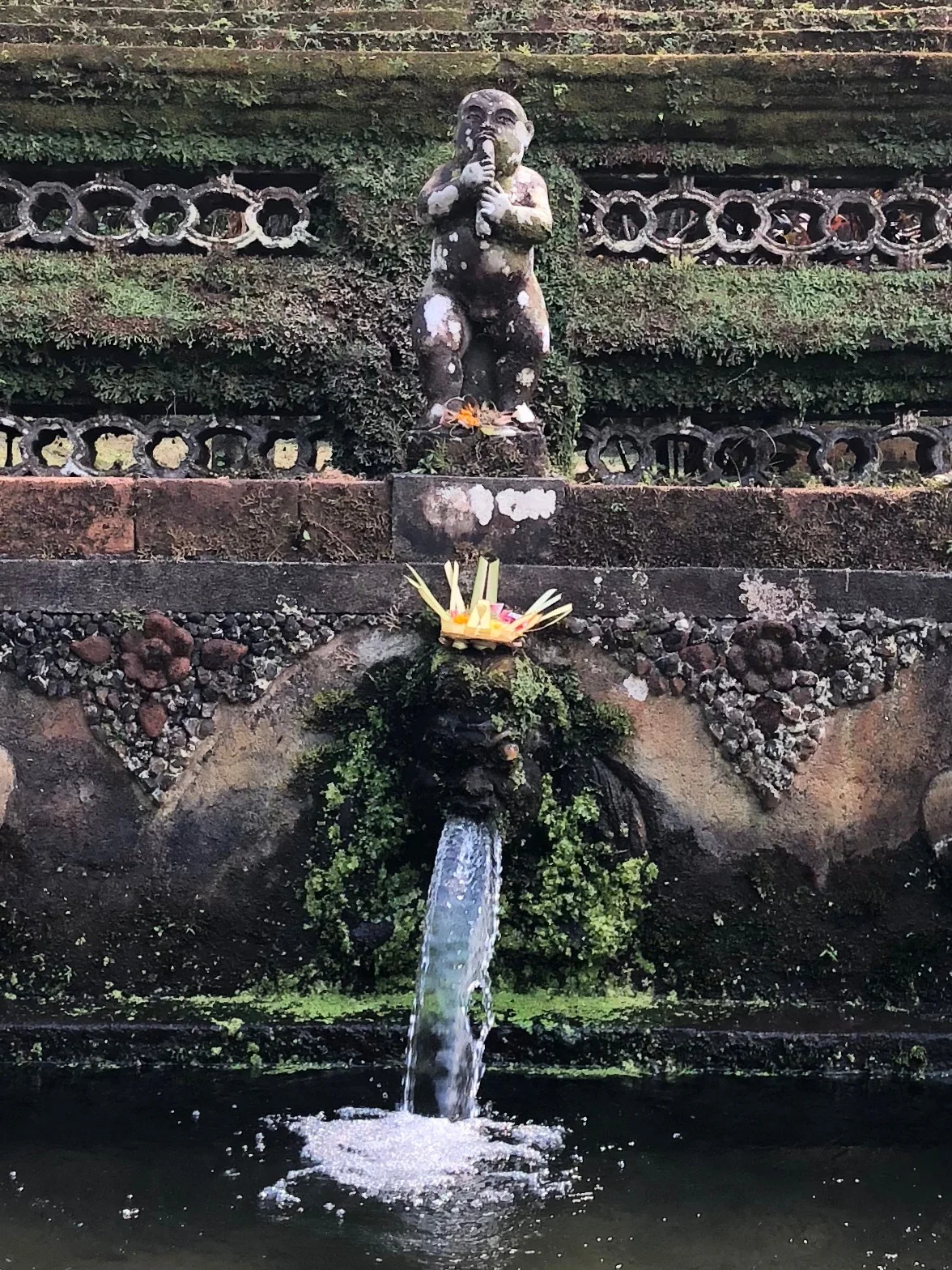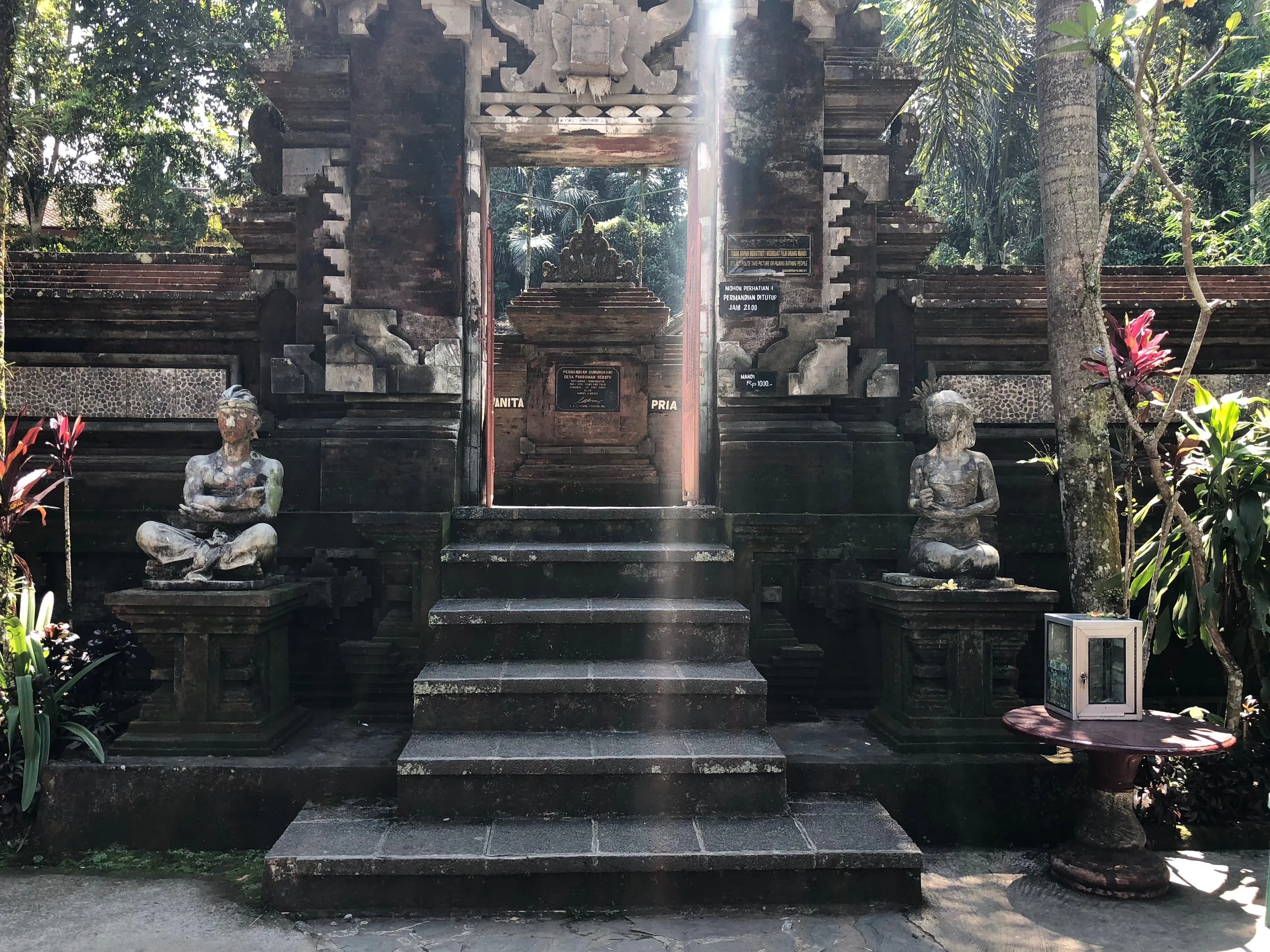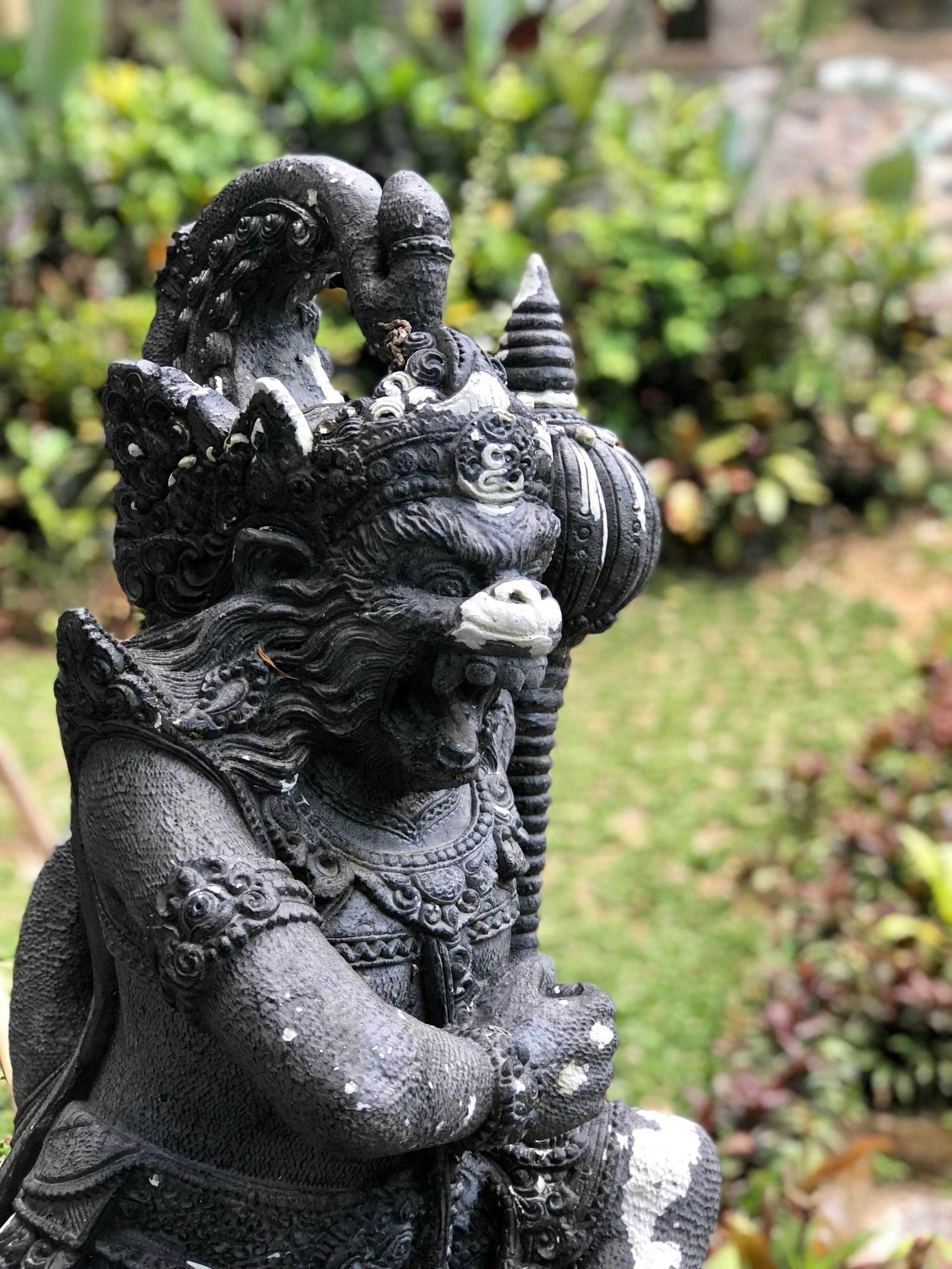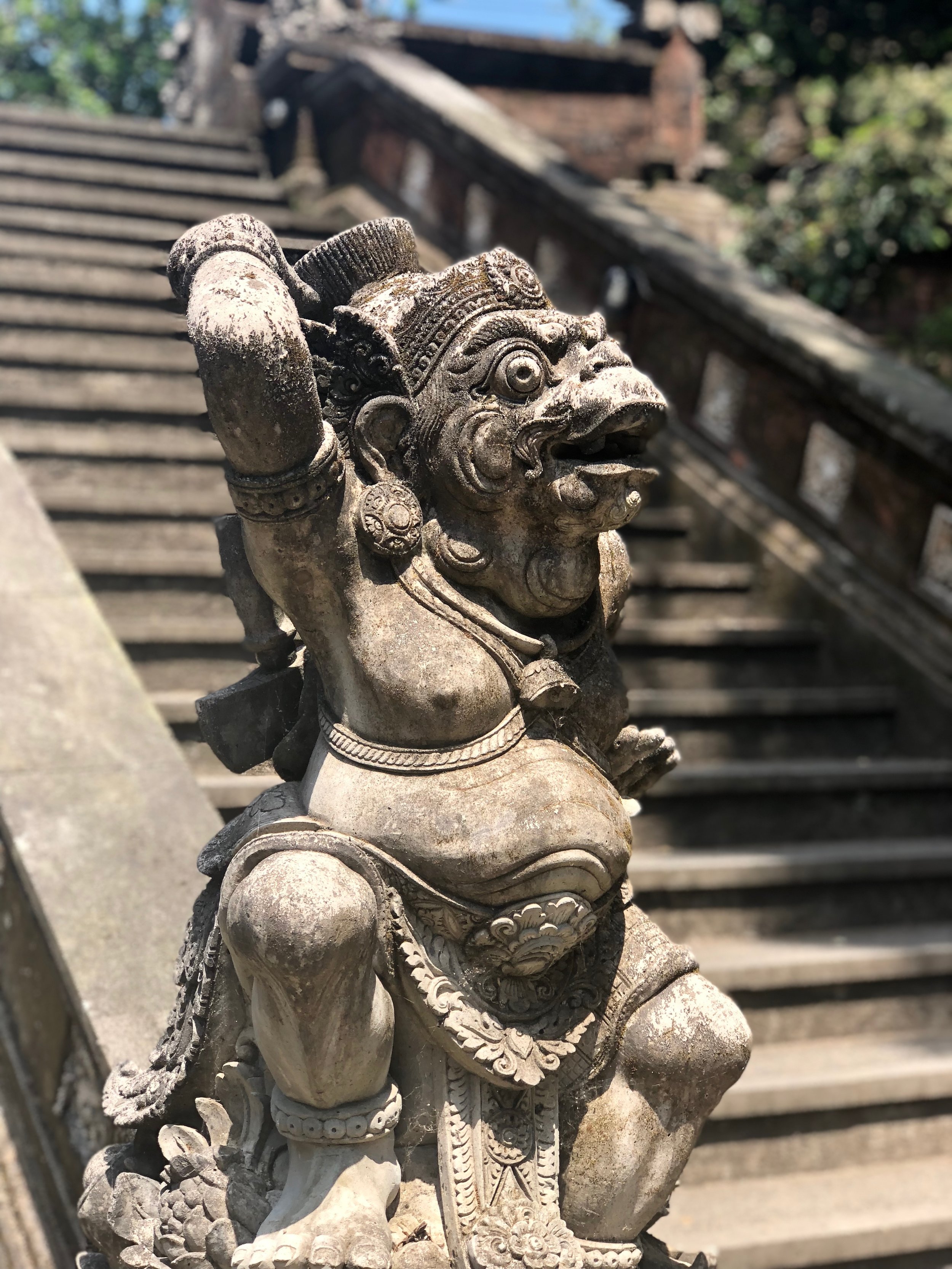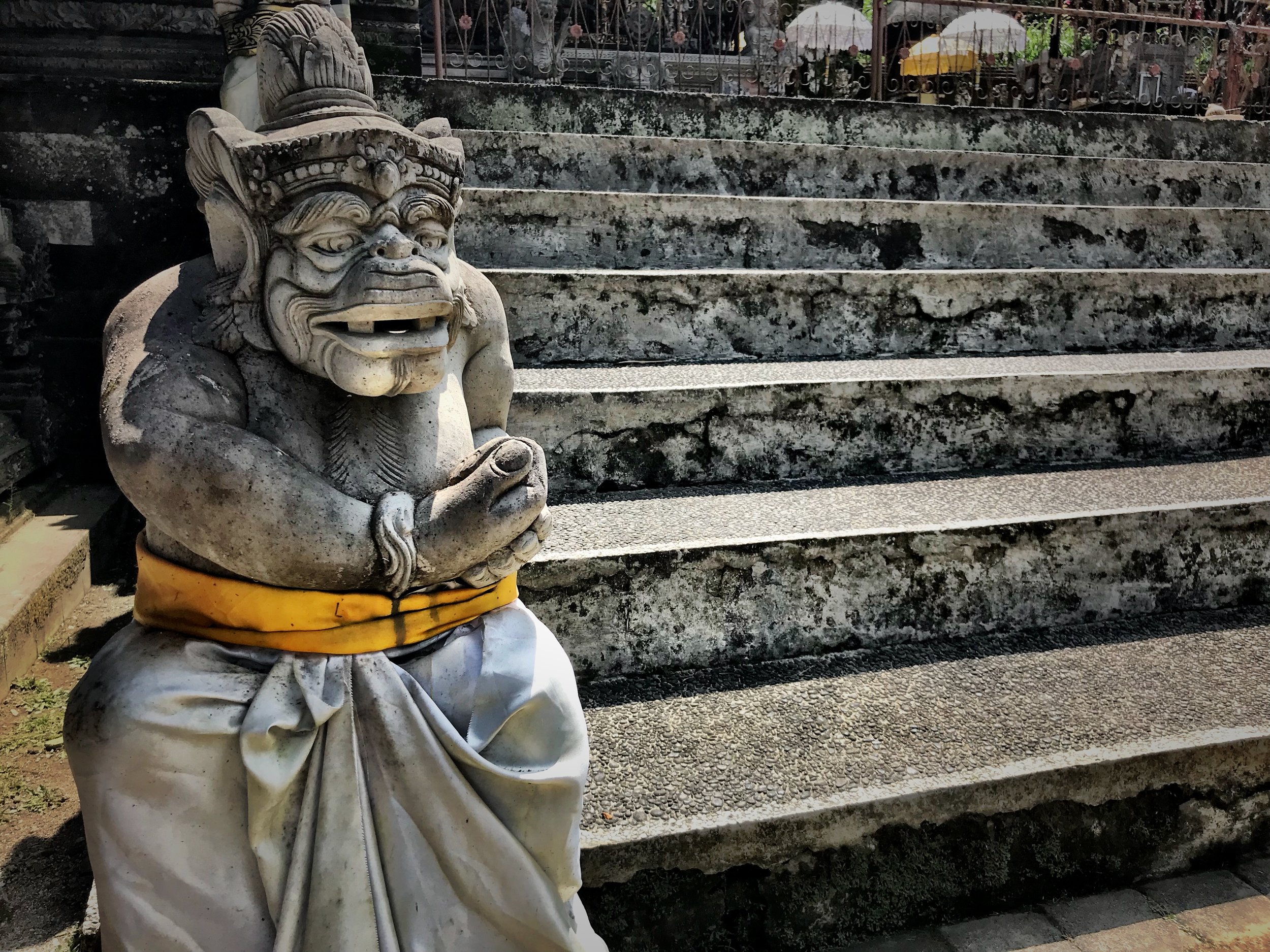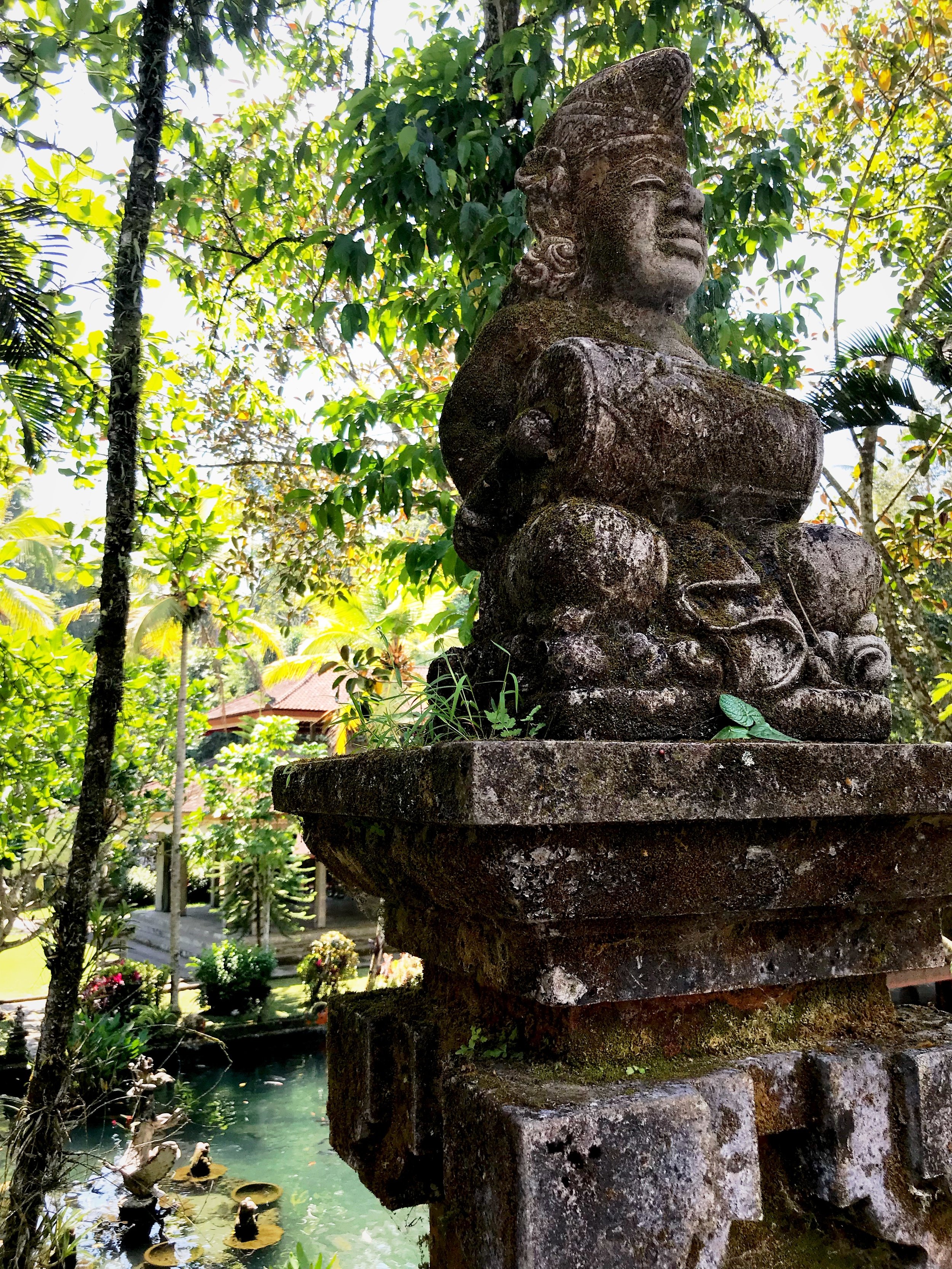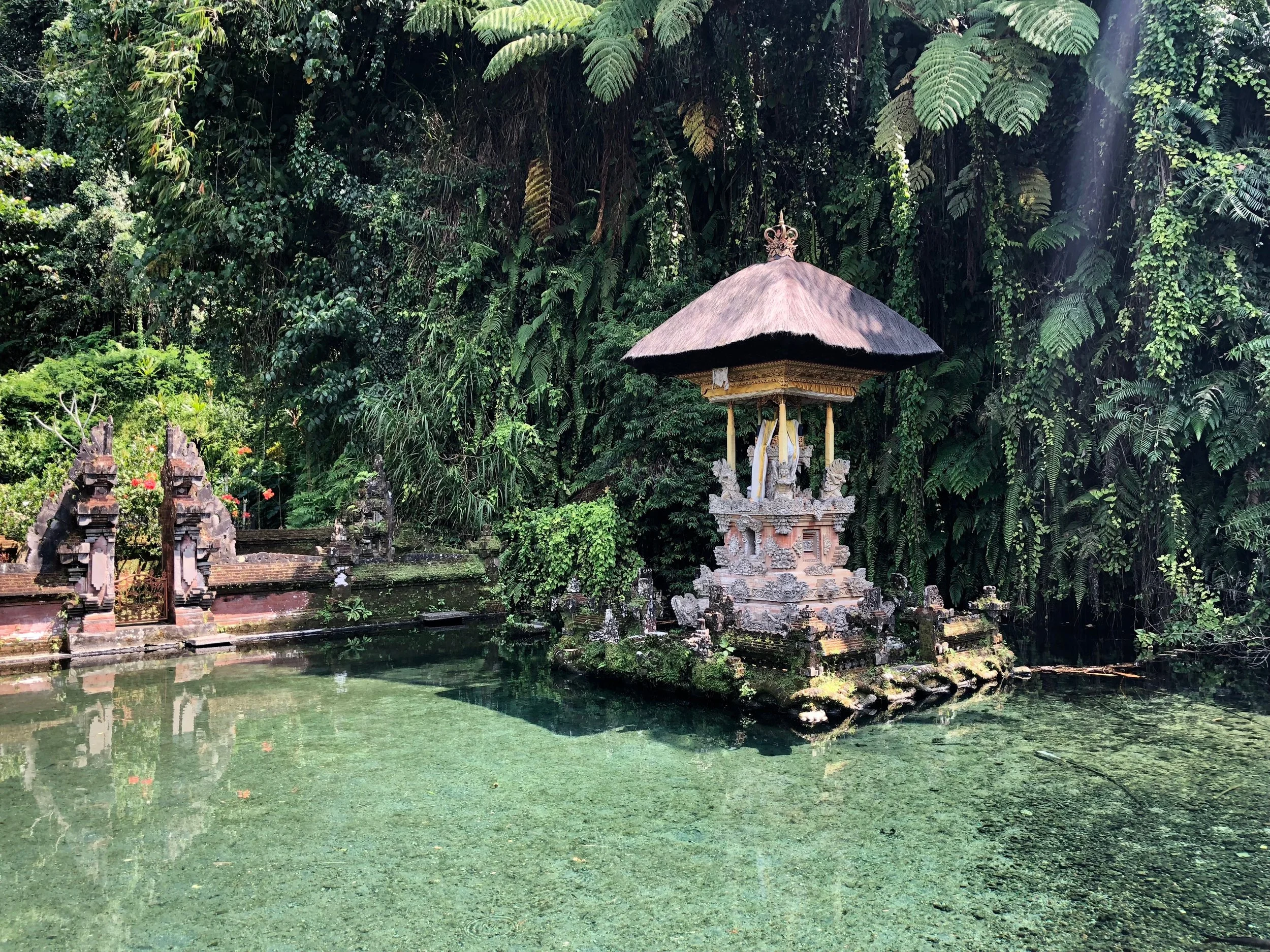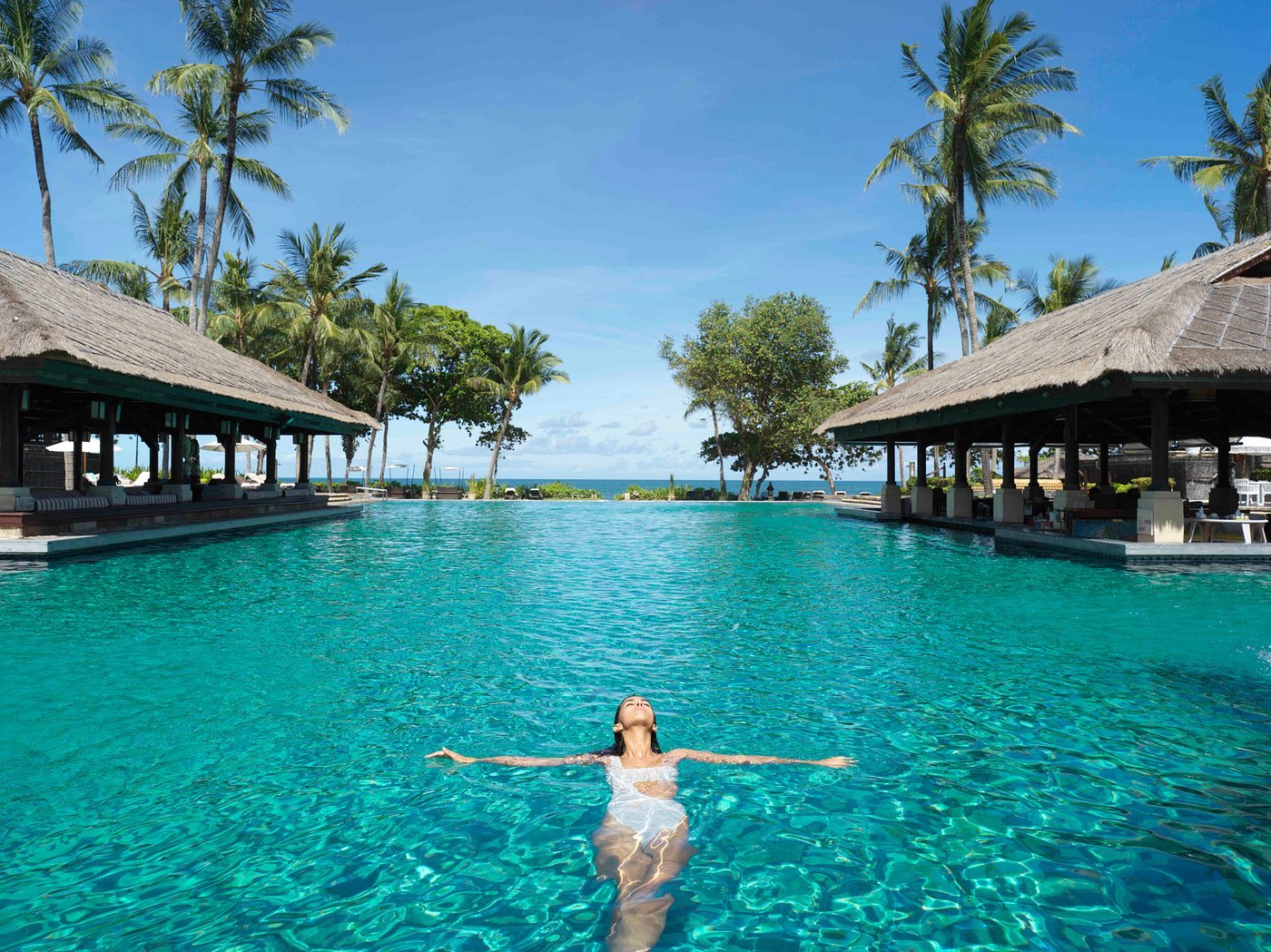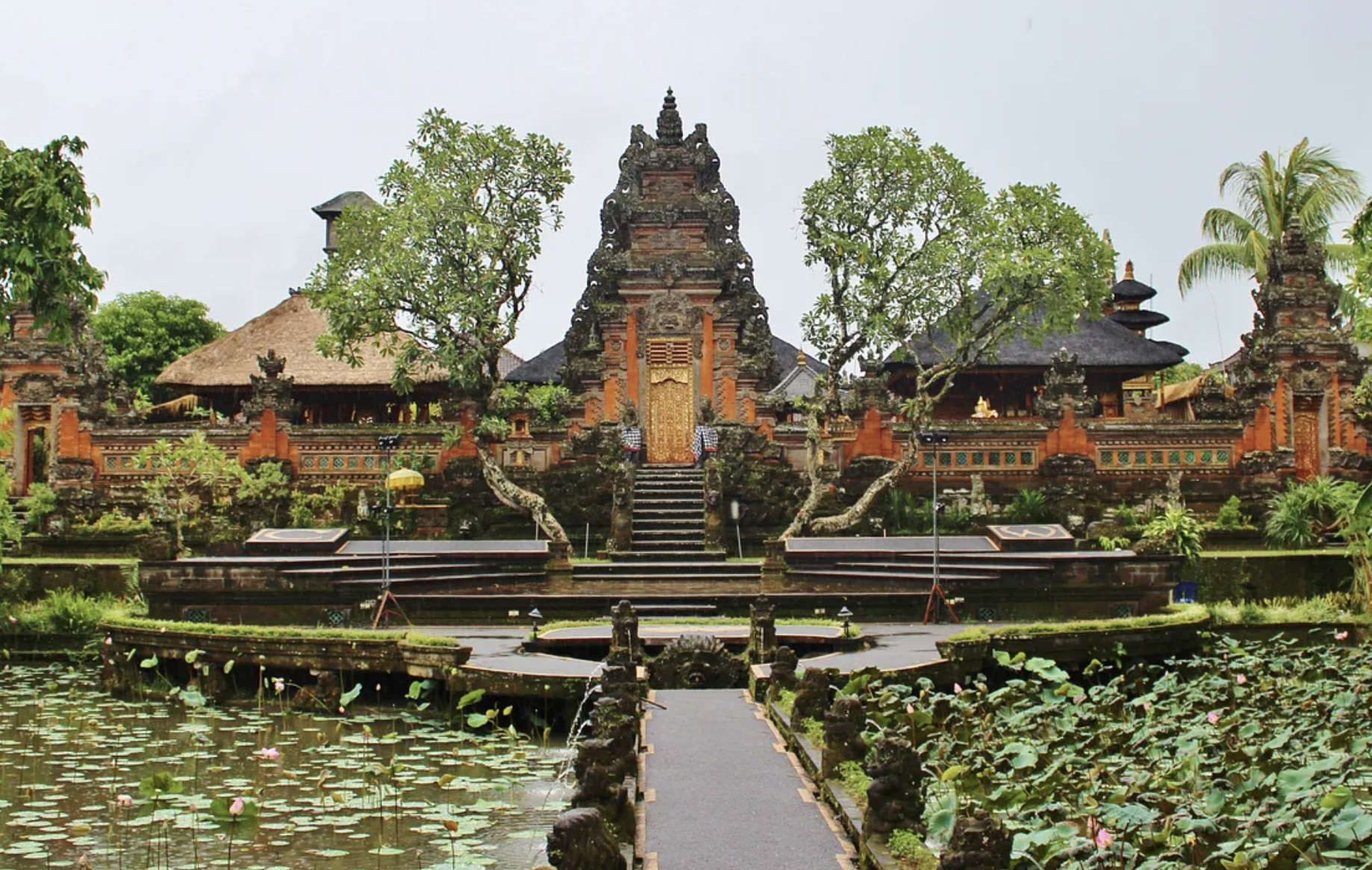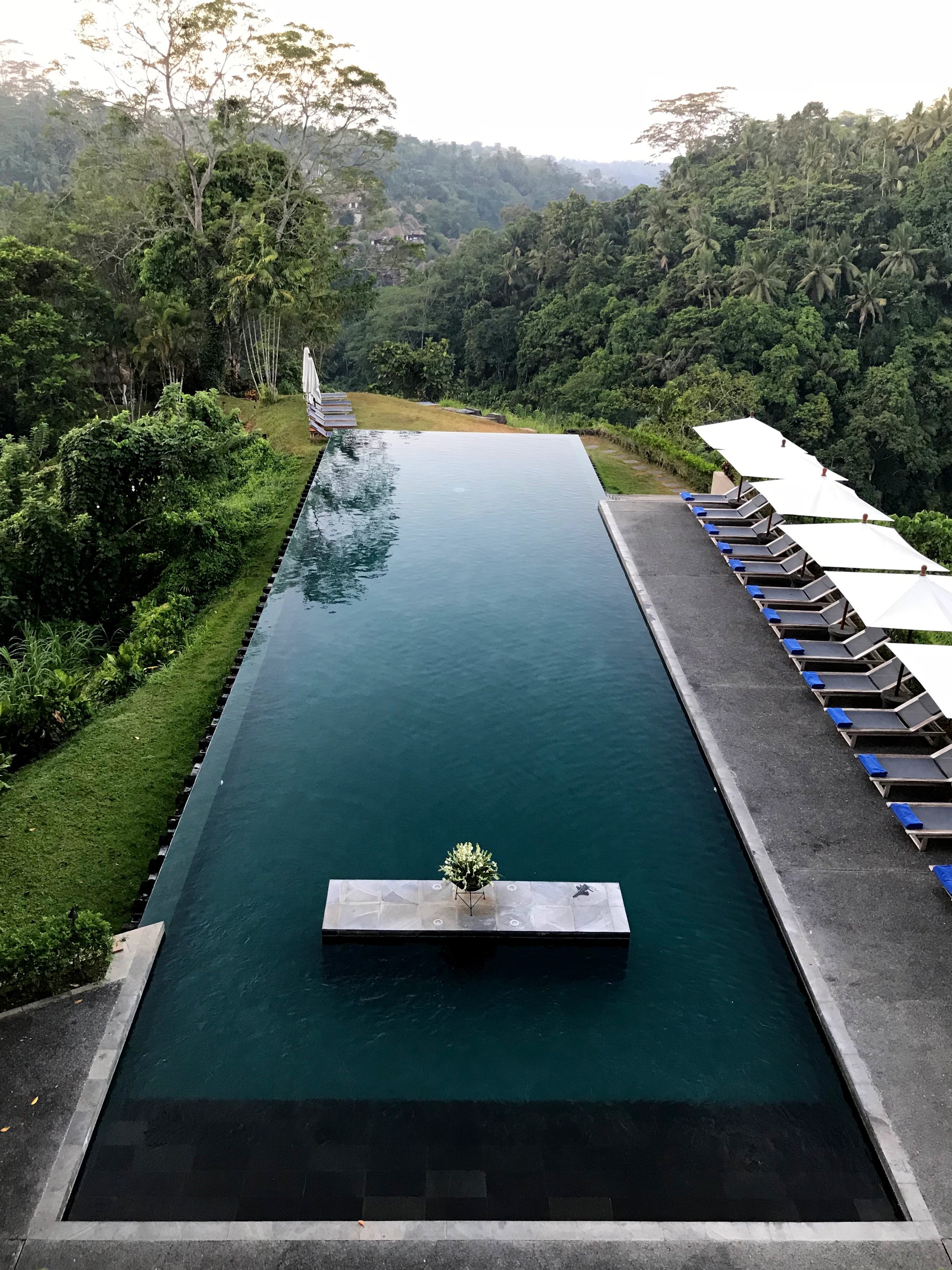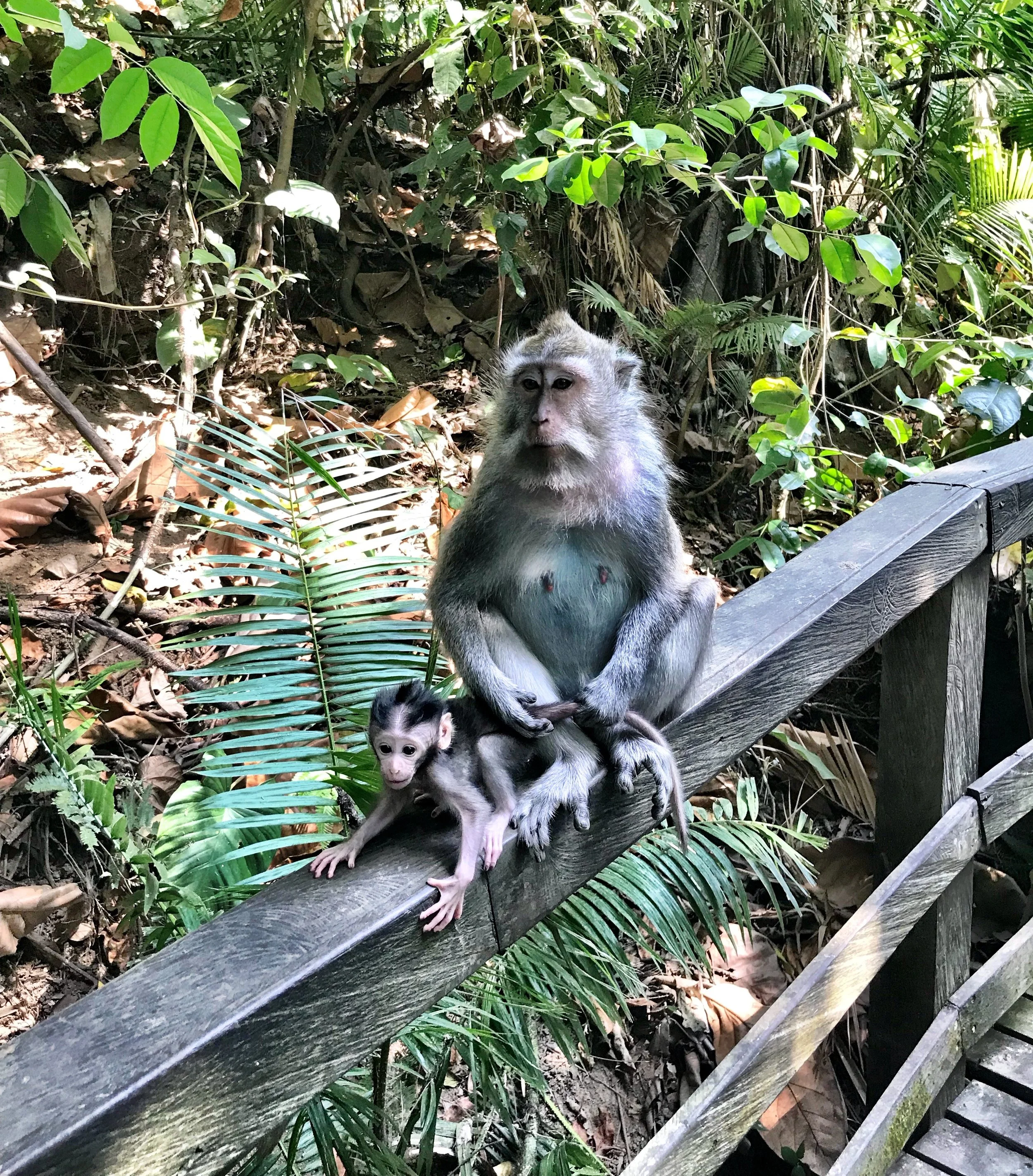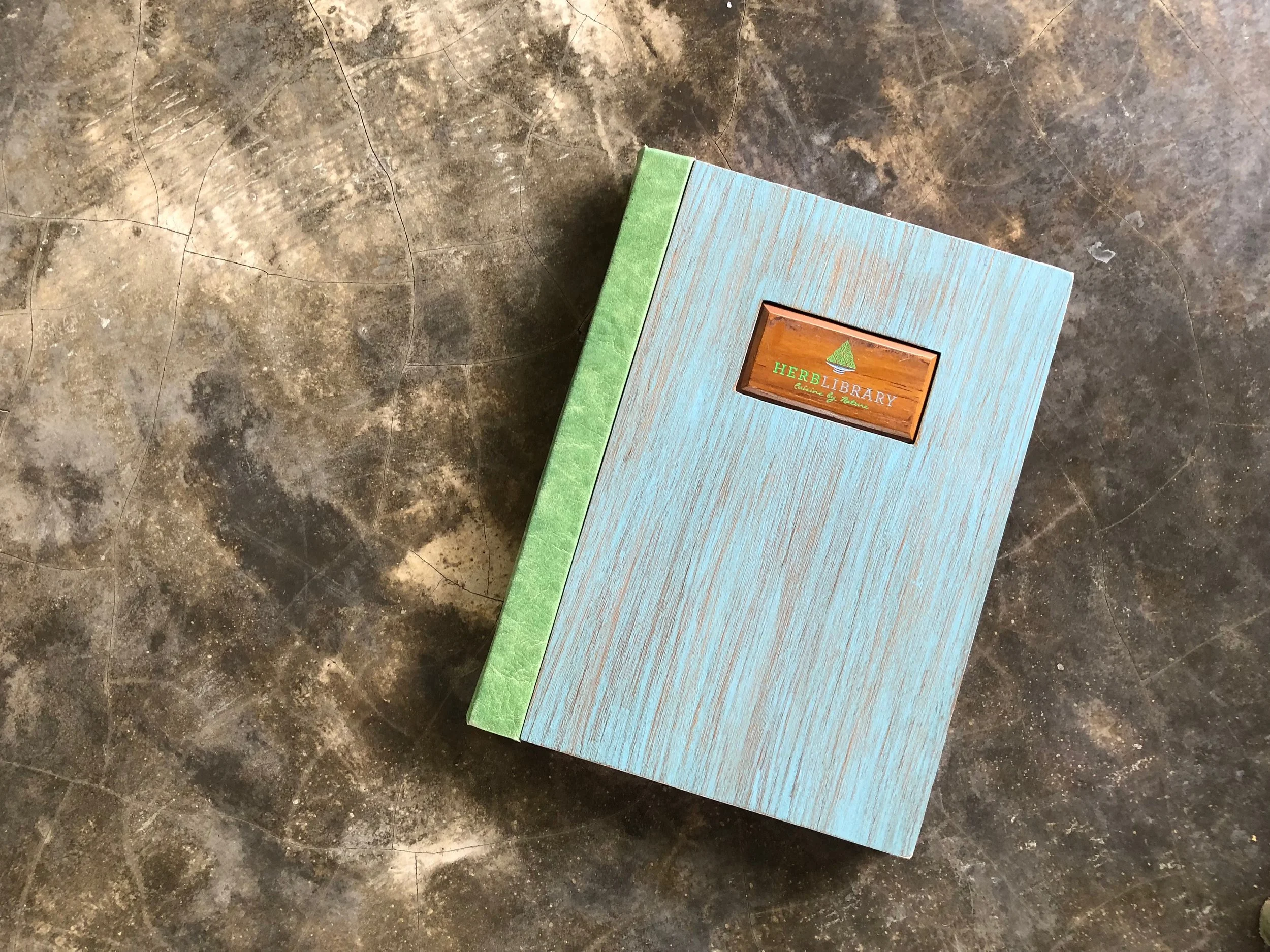Bathe in and explore this calm and cool ancient holy spring near the Tegalalang Rice Terrace.
Balinese people bathe in the holy fountains at water temples, like Pura Gunung Kawi in the village of Sebatu
Wally and I arrived at the water temple of Gunung Kawi in what seemed like a relatively short distance from the Tegallalang Rice Terrace. I’ve mentioned the traffic-choked roads we experienced during our time on Bali in previous posts, which make destinations feel farther away than they really are.
Our driver Made parked his vehicle and adjusted our sarongs before sending us off to cross the road and purchase tickets to the sacred site.
“Wally peeked over the wall and was surprised to see a naked old man peeing into one of the holy pools. ”
Wally didn’t get all the way in the bathing pool — he and Duke just poured water over their heads
The lichen-covered stones lend Balinese temples an ancient air
An assortment of daily offerings placed at the threshold of the bathing pools are filled with flowers and sticks of incense
The complex was established during the reign of King Udayana in the 11th century and is referred to by locals as Pura Tirta Dawa Gunung Kawi Sebatu. Not to be mistaken with the stone monoliths of Gunung Kawi in the neighboring town of Tampaksiring, this smaller, less-visited holy spring temple dedicated to one of the principal Hindu deities, Vishnu, is located in the highland village of Sebatu.
Looking down upon the complex, with its central pool and fountain of the goddess Saraswati
Walking alongside the road, you can take in a sweeping bird’s-eye view of its immediate surroundings. We made our way down a set of steps and arrived at a meandering path that led us past a few elegant pagoda-style cages, one of which housed a striking yellow-crested cockatoo preening itself.
Pagoda-like birdcages line the main pool
A striking cockatoo with a sulphur-yellow crest
The aviary lines the large reflecting pool with four whimsical stone frogs peeking above the waterline, I suspect they are meant to be fountains, but were either not working, or on when we visited. Surrounding the frogs is the formal pools centerpiece, an ornamental statue of the goddess Saraswati standing atop the back of a swan. The crystal clear waters are filled with well-fed koi fish and overlooked by a grand open-air pavilion with a hipped terra cotta tiled roof.
This platform overlooks the central pool
Holy carp! The pool is filled with koi and isn’t a place for bathing
Not far beyond are a series of small spring-fed pools where locals ritually bathe. Wally and I didn’t feel right entering them, so we improvised by cupping our hands to collect water, which we splashed upon our heads. It was cool and clear and felt refreshing in the early afternoon heat.
Water pours from the weatherworn carved faces in the bathing pools
While I was taking a picture of one of the lichen-covered faces spewing water from its mouth, Wally peeked over the wall and was surprised to see a completely naked old man peeing into one of the holy pools.
Before you cross the threshold of this sacred space, make sure you’re wearing a sarong
Slippery Rock: The Story Behind the Name
According to legend, there once was a man named Mayadenawa, a descendant of the powerful Daitya, a race of demons, and the primordial goddess Danu. He was a practitioner of the dark arts and possessed supernatural powers that allowed him to shapeshift.
When he ascended to the throne, King Mayadenawa regarded himself as a deity, and under this pretense, commanded his subjects to worship him. His behavior angered the storm god Indra, who watched from afar and ordered his celestial armies to attack.
Most temples on Bali have statues of demons
Statues act as guardian spirits
King Mayadenawa knew he was no match for Indra’s troops and manifested a great pool of poisonous water near their encampment. When the army woke, they drank and bathed in the pool. Hundreds fell ill. Seeing this, Indra drove a stake deep into the earth from which a sacred spring emerged. The fleet was immediately reinvigorated as the purified water touched their lips.
To avoid capture, Mayadenawa cunningly morphed into several creatures. Each time, he barely escaped. He transformed into the great bird manuk raya, immortalized in the village of Manukaya. He also appeared as a bulbous green-skinned breadfruit, buah timbul, in what became Timbul village.
Exhausted, Mayadenawa fled and transformed himself into a huge rock. Indra saw droplets of blood forming on the surface of the rock, drew his bowstring back and shot his magical arrow into the boulder. Blood flowed from the stone, forming the Petanu River, which was cursed for a period of 1,000 years.
Sebatu, the village where the temple is located, derives from the Balinese words sauh (meaning “slip”) and batu (“rocks”) or Slippery Rock. As Indra’s troops chased the king, many innocent people lost their footing, giving Sebatu its name.
A wooden effigy of a deer
A Quiet Oasis
As we wandered farther into the complex, we discovered a second rectangular pool with a small, palm-thatch roof shrine on a man-made island embellished on four sides with winged apsara. The backdrop of dense foliage lent a mystical aura to the singular structure.
The main temple was beautiful, but off limits. However, there are a few pavilions and ancillary shrines reserved for ancestral spirits worth exploring. Artisans of this village are known for their woodcarving skills and expressively painted sculptures which can be seen in the intricately carved beams and depictions of otherworldly benevolent and demonic beings.
Taking in the calm surroundings of this unusual, untouched sacred site made us feel like we were our own special world. With the exception of a few locals, Wally and I had Gunung Kawi Sebatu to ourselves. –Duke
Pair a trip to this water temple with the cliff shrines of the same name and the Tegallalang Rice Terrace
Pura Gunung Kawi
Sebatu
Tegallalang
Gianyar
Bali 80511
Indonesia


